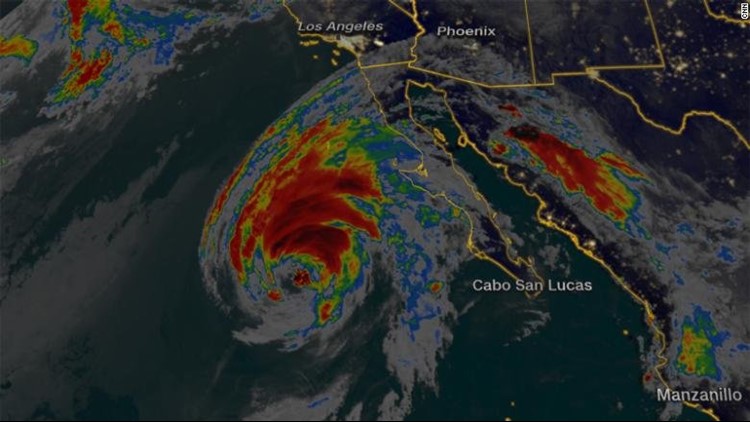PHOENIX, Az. — Deserts aren’t supposed to get much rain, but Tropical Depression Rosa is flipping the script.
Rosa is forecast to make landfall Tuesday with more than 11 million people under a flash flood watch in the Southwest, CNN meteorologist Michael Guy said.
It’ll drench Baja California with 3 to 6 inches of rain, with some spots getting up to 10 inches, the National Hurricane Center said.
Rain pounded the Northern Baja and Southern California desert regions, and the Mexican state of Sonora just south of the Arizona border.
“Rain is also pushing up into Arizona just south of Phoenix and will most likely move into metro Phoenix in the next few hours,” Guy said.
Rosa was downgraded from a tropical storm to tropical depression early Tuesday morning.
As it moves northeast, Rosa will also dump 2 to 4 inches of rain on much of Arizona, with up to 6 inches in the mountains. A flash flood watch is in effect for parts of Arizona until Wednesday as the storm’s remnants move across the state, the National Weather Service said.
“These rainfall amounts may produce life-threatening flash flooding,” the National Hurricane Center said. “Dangerous debris flows and landslides are also possible in mountainous terrain.”
Historically, it’s unusual for the US Southwest to get pummeled by a hurricane or tropical storm. But “these events have begun to increase in recent years,” CNN meteorologist Gene Norman said.
Research indicates that global warming contributes to tropical storms getting “more intense, bigger and longer-lasting, thereby increasing their potential for damage,” said Kevin Trenberth, senior scientist at the National Center for Atmospheric Research.
While there might not be a direct link between global warming and the recent increase of severe storms in the US Southwest, “it is possible that this could be a side effect of climate change,” Norman said.
“Warmer oceans are allowing eastern Pacific storms to reach higher latitudes,” he said. “This was not the case earlier. It was quite rare for an eastern Pacific storm to even reach Baja California, and this is now becoming more common.”
Rosa was about 105 miles North of Punta Eugenia, Mexico, 5 a.m. ET Monday, with maximum sustained winds of 35 mph.



